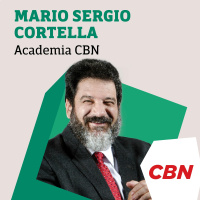Sinopsis
Critical Care podcasts from the Intensive Care Network
Episodios
-
Raw Science 4: The Gas Laws
27/01/2016 Duración: 20minBasic Science Clinic by Steve Morgan & Sophie Connolly We live in a society exquisitely dependent on science and technology, in which hardly anyone knows anything about science and technology. Carl Sagan Welcome to Basic Science Clinic Raw Science episode 4. We are close to embarking on the descent down the oxygen cascade, en route we will examine the key contributors to these stepwise decrements in oxygen partial pressure that coax the gas down to the level of the mitochondria. To grasp the concepts essential to the physiology of this pathway you need to understand the fundamentals of gas behaviour, enter the gas laws. In this pod we will cover: Boyle’s, Charles’, Guy-lussac’s laws Avogadro’s number Dalton’s and Henry’s laws Saturated vapour pressure & boiling point The concept of in vivo partial pressures Raw Science Factoids Increasing ambient pressure from 1 to 2 atm will decrease the volume of 1L water by 400 mmHg and FiO2 1.0 gives PiO2 > 2000 mmHg, resulting in tissue hyperoxia. Opening
-
Crit Think 3: You Do The Math(s) - Mathematical Relations
20/01/2016 Duración: 22minBasic Science Clinic by Steve Morgan & Sophie Connolly If you would be a real seeker after truth, you must at least once in your life doubt, as far as possible, all things. Rene Descartes Welcome to Basic Science Clinic, this is the 3rd Crit Think podcast on mathematics. Having examined the origin of maths and its influence on the enlightenment explosion of rationality and empiricism, we now turn our attention to extracting the ways maths turns up in our critical care practice. Is it essential to know the maths? Thou doth protest too much methinks. Think of these relationships as the grammatical fibre to your conceptual fabric. It’s like totally, you know like, easy to make yourself understood without no grammar, do ya know wanna I mean…like? However, understanding maths as the language of science with grammatical and linguistic accuracy changes your perception of the relationships between the physiological variables that you are attempting to dial up in your practice. Go deeper, understand better, effor
-
Raw Science 3: Atmospheric Physics
13/01/2016 Duración: 24minBasic Science Clinic by Steve Morgan & Sophie Connolly Equipped with his five senses, man explores the universe around him and calls the adventure Science. – Edwin Hubble Welcome to the third podcast in the Basic Science Clinic Raw Science series. Following our investigation of the how and why of oxygen, you may be eagerly anticipating the gas’ entry into the respiratory system, prompting a discussion of gas flow, partial pressures and similarly patient-based physiology. Think again. Resisting the urge to dive down the trachea, we need to describe some foundational concepts to fine tune the resolution of your understanding. Enter atmospheric physics. Remember physiology is functional biology, biology is effectively applied chemistry, and chemistry is applied physics. This week we discuss the physics of atmospheric gas in the biosphere. Such a topic raises discussion of fluid and gauge pressure, heat and temperature, the SI units and clearly, why the sky is blue. Feedback, requests and corrections are
-
Crit Think 2: You Do The Math(s) - Maths & Science
07/01/2016 Duración: 38minBasic Science Clinic by Steve Morgan & Sophie Connolly “As far as the laws of mathematics refer to reality, they are not certain; and as far as they are certain they do not refer to reality.” - Albert Einstein Welcome to the second podcast in the Crit Think series from the Basic Science Clinic. Remember, this is about stimulating insights into the machinations of your mind to assist able deployment of the knowledge you are rapidly assembling, to be a better scientist. Having discussed the evolution of mathematics and the concept of number in our first podcast, we move now to examine the relationship of maths and science. The debatable definition of maths as a science is one thing, but its contribution to science in its performance and explication, and also in informing the development of the method itself, is unquestionable and worthy of acknowledgement. Addressing a subject that entire degrees are dedicated to escaped the confines of our usual length, but we hope you can hang in there with us. Co
-
Raw Science 2: How Oxygen?
31/12/2015 Duración: 20minBasic Science Clinic by Steve Morgan Among the notable things about fire is that it also requires oxygen to burn - exactly like its enemy, life. Thereby are life and flames so often compared. - Otto Weininger Welcome to the second podcast in the Basic Science Clinic Raw Science series. In our somewhat circuitous exploration of respiratory physiology we will complete the story of the promiscuously electronegative pharmaceutical gas oxygen. In the first episode of this series we addressed the ‘why’ of oxygen, exploring its unique physicochemical properties to explain its onerous position as the foundational slab of our hierarchy of needs. Having traced our way from the presence of oxygen in the atmosphere to the ETC at a mitochondrial level, we now move to the ‘how’ of oxygen. In this second podcast we return to the atmosphere, examining the contributors to the gaseous composition, as both a signature and supporter of complex biology, and the morphological adaptations necessary to successfully interface wit
-
Crit Think 1: You Do The Math(s) - Maths & Humans
24/12/2015 Duración: 26minBasic Science Clinic by Steve Morgan & Sophie Connolly All our knowledge begins with the senses, proceeds then to the understanding, and ends with reason. There is nothing higher than reason. Immanuel Kant Welcome to Basic Science Clinic Crit Think. Our Raw Science series is to provide content for the new programs that you are writing for your intracranial wet-wear, Crit Think is the upgrade of your operating system. The study and understanding of the process, structure and potential pitfalls of thought, ie thinking about thinking or metacognition, helps you to integrate the knowledge you are acquiring and then apply it with scientific rigor, making you a safer, skeptical, rational bedside empiricist. Create the good habits of data seeking and analytics to emulate the best consultants, with their granular, high fidelity knowledge and their near preternatural ability of pattern recognition that leads to the right intervention just in a nick of time. This series will include mathematics, what latin is to
-
Raw Science 1: Why Oxygen?
24/12/2015 Duración: 21minBasic Science Clinic by Steve Morgan Assume nothing, trust no one, give oxygen. – Anon Welcome to Basic Science Clinic Raw Science podcast series. In case you haven’t being paying attention, science is cool. Indulge your inner geek by joining us on our pursuit of developing an integrated scientific understanding from which you can develop a clinical practice informed by deeper insights and inoculation against magical thinking. We are going to take an unashamedly convoluted journey from atmospheric gas to the mitochondria and back again, to examine respiratory physiology and hopefully frame the information in a format that helps you on your inexorable march to examination success. Have you ever asked yourself what is all the fuss about oxygen? In the first two podcasts we are going to address why oxygen is the foundational slab of our hierarchy of needs and how it got here in the first place. It might just give you a renewed appreciation of nature’s most vital pharmaceutical. We would love to hear feedback and
-
-
Paul Young on SPLIT, HEAT and Platform Trials
19/10/2015 Duración: 30minPaul Young is the man of the moment. In one week has has published the SPLIT trial in JAMA, the HEAT trail in the NEJM and presented both at the ESICM conference. Platform Trials. In this interview Paul discusses The SPLIT Trial - the first trial to substantially look at buffered crystalloids vrs saline and now really paves the way for a definitive trial in this area. He answers some questions that have been asked such as was the volume of fluid sufficient to demonstrate an effect, why PlasmaLyte was used and what he’ll be doing following these results. HEAT is a much anticipated trial looking at the effect of early administration of acetaminophen to treat fever due to probable infection. This intervention did not affect the number of ICU-free days. Paul captured out imagination on this topic with a talk at SMACC in 2013 and now the dialogue really begins. We discuss where to go from here on this topic that often stimulates passionate debate… Finally we discuss Platform trials and how they will save the world
-
Leo - Powerful Presentation
13/09/2015 Duración: 22minGrace Leo shares her cornerstones for developing a powerful presentation: passion, purpose and practice. In this workshop talk from smaccGOLD, she also provides tips and strategies to turn an average presentation into one with style. For the full post, please see www.intensivecarenetwork.com
-
Disaster Planning for Dummies
03/09/2015 Duración: 21minA personal story of cyclone Yasi The beginning of 2011 was an extraordinary period for natural disasters in our part of the world. It began with the floods in South East Queensland, then Cyclone Yasi, the Christchurch earthquake and finally the Japanese tsunami. The evacuation of the Cairns Hospital in less than 24 hours is one of the great success stories for Emergency Services in Queensland. It is even more extra-ordinary when one realizes there was no formal evacuation plan for Cairns Hospital in place. Many health professionals put aside their personal welfare and concerns for their own homes to ensure that 320 patients were evacuated without a single fatality. Special mention should be made of those that weathered the Category 5 winds (over 250 km/hr) in the stand-alone basketball stadium that served as the ‘hospital’ for 250,000 people post Cairns Hospital shutting down. This presentation by Dr Sean McManus outlines an exhausting 96 hours. Firstly managing the evacuation of ten ventilated patients from
-
Bloody Anticoagulants
02/09/2015 Duración: 18minBloody Oral Anticoagulants – BCC talk 2014 The use of the New Oral Anticoagulant Drugs present unique challenges for the Intensive Care practitioner 1. The NOACs now have PBS approval for non-valvular AF, below knee DVT, DVT prophylaxis and low volume PE 2. There is no specific antidote for NOAC related bleeding but don’t despair there are some things that can help 3. Routine coagulation testing does not reflect drug levels or anticoagulation activity Global sales of Dabigatran topped $1billion in 2012. This talk outlines the pharmacodynamics and pharmacokinetics of the NOACs. Limitations and cautions of use are outlined with a review of the extensive literature. Clinical cases involving the NOACs are presented. The timing of stopping the agents before minor or major surgery, the approach to a patient with intracranial haemorrhage taking oral anticoagulants and the challenges faced when patients have an Acute Kidney Injury whilst taking these
-
Neuro-Trauma
29/08/2015 Duración: 16minNeurotrauma – How to Put Humpty together again Humpty is a 23 year old egg, who fancied himself as a bit of a Hipster. Little did poor old Humpty know that his day was about to end in tears and he was to join the 1000 other Australians who annually have a severe head injury. The talk focuses on Traumatic Brain Injury. There is particular emphasis on Traumatic Subarachnoid Haemorrhage and Transfusion Thresholds in Traumatic Brain Injury. The discussion explores the incidence and patterns of vasospasm following tSAH and the role, if any, of nimodipine and other therapies usually reserved for the aneurysm SAH population The optimal target haemoglobin concentration following TBI is unknown. The discussion looks at the literature and explores the pathophysiology of anaemia in this setting. A blood conservation strategy for patients with TBI is outlined
-
Penetrating Injuries to the Neck
27/08/2015 Duración: 15minPenetrating injuries to the neck is a great summary of how to assess and manage neck wounds from lacerations to the airway to gunshot wounds. The talk covers relevant anatomy, the zones of the neck and how to investigate vascular, tracheal and oesophageal injuries. A comprehensive understanding of the relevat anatomy is essential to recognising associated injury patterns. The improvements in the accuracy of helical CTA scans has meant that the delineation of the zones of the neck has become less relevant to the further investigation and management of pemetrating neck wounds. Oesphageal injuries remain difficult to detect and require a high level of clinical suspicion to identify these.
-
Feeding in ICU: A Trickle or a Torrent?
27/08/2015 Duración: 30minFeeding in the Intensive Care - A trickle or a torrent, is a great summary of several key critical care nutrition trials and how we can apply the evidence from these to the ICU patient. Providing adequate nutrition to patients in the intensive care is an extremely complex therapy that must be carefully titrated on a daily basis. The evidence for how to provide nutrition to critically ill patients is largely lacking and what evidence there is is often contradictory. In this presentation I will look at four feeding trials conducted in the ICU setting and published over the last 3 years. While the results are somewhat conflicting, there are lessons from each that we can apply at the bedside.
-
SMACC BACK with FONG
23/08/2015 Duración: 04minSMACC BACK! with Dr Kevin Fong An interview with Kevin Fong following his talk on safety lessons from space at SMACC Chicago. He is a highly decorated speaker with qualifications in astrophysics, medicine, anaesthetics, engineering and ICU, as well as a regular TV guest star on BBC2 show Horizon, NASA advisor and co-founder, co-director of CASE medicine. He spoke to us about how we can protect ourselves and our patients from risk and how we can better our skills in medicine. We will be sure to catch him at SMACC Dub next year!
-
Ercleve - Resuscitating Art
16/08/2015 Duración: 21minTor Ercleve talks about Resuscitating Art...diving into the world of infographics, symphonies and battle planning. You'll leave this talk refreshed and inspired to reinvent the way you communicate information. This talk was recorded at the smaccGOLD Get Creative Workshop. To see the talk with slides check out www.intensivecarenetwork.com/tor-ercleve-resuscitating-art
-
SMACC BACK with BELLEZO & HO
10/08/2015 Duración: 08minSMACC BACK! In the third interview of the series, Sophie and myself get the opportunity to discuss all things ECMO with leading experts of ED ECMO, Joe Bellezzo and Chris Ho. Following their highly entertaining cage match at SMACC Chicago in which Joe and Chris are forced to take opposing sides on ED ECMO, we get to hear their real opinions on how this equipment is becoming more and more accessible and valuable in the resus scenario. Between the friendly banter, Joe and Chris have some incredible insights into the future of ECPR. We hope to see a lot more of these guys at SMACC next year!
-
SMACC BACK with HINDS
28/07/2015 Duración: 05minSMACC BACK! After an excellent talk at SMACC US which introduced us to #resus wankers , Dr John Hinds took time to chat with Sophie Connolly and Alice Young (ICU Residents from RNSH) about why SMACC is THE BEST conference, challenges for junior doctors and more! We thank Dr John Hinds for his positive influence on critical care in Northern Ireland and throughout the extended CC community. He will be missed and our thoughts go out to his family.
-
SMACC BACK with WEINGART
17/07/2015 Duración: 06minSMACC BACK! Scott Weingart takes time out between his entertaining and enlightening talks given at SMACC Chicago to chat with Sophie Connolly and Alice Young (ICU Residents from RNSH) about all things SMACC, the differences between training in the USA and Australia, advice for junior doctors and the origins of EMCRIT. Check out this interview as a prelude to the release of the talks given at SMACC Chicago.















